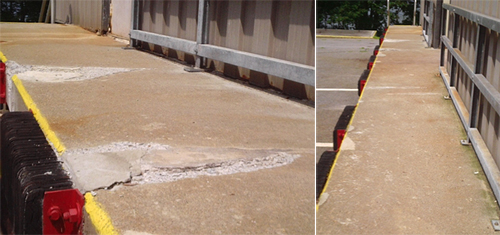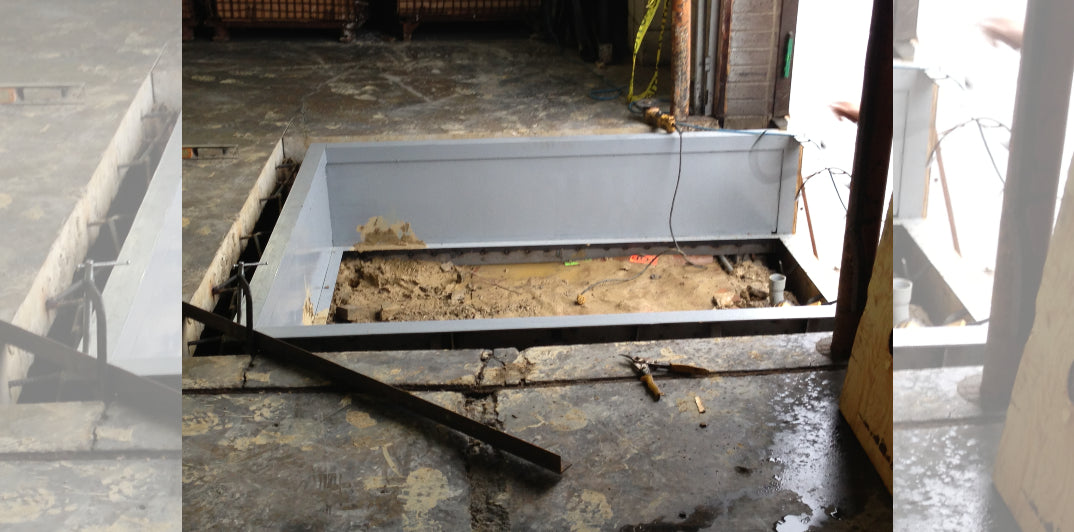The Significance of Timely Dock Repairs for Waterfront Security
Effective Dock Repair Techniques: Ensuring Architectural Honesty
Ensuring the architectural integrity of anchors through reliable repair methods is paramount for the durability and safety of marine centers. Subsequently, picking the right repair service products, such as composite products and corrosion-resistant alloys, is crucial for toughness.
Assessing Dock Damage
Assessing dock damages is a crucial first step in guaranteeing the structural integrity and safety of any docking facility. Key aspects to examine include the dock's foundation, pilings, outdoor decking, and equipment (Dock Repairs).
Architectural designers or qualified examiners usually do these evaluations utilizing specialized tools and techniques. Undersea examinations may utilize sonar equipment or remotely ran automobiles (ROVs) to spot immersed damages. Over water, aesthetic examinations are enhanced by utilizing wetness meters and other analysis tools to reveal underlying problems not right away visible to the nude eye.

Picking Fixing Materials
Picking the appropriate fixing materials is a critical action in the dock remediation process, one that directly influences the durability and performance of the repaired structure. Material selection must be driven by elements such as environmental conditions, load-bearing requirements, and compatibility with existing dock components. Wood is a conventional choice for anchors due to its all-natural strength and aesthetic appeal. Selecting the appropriate kind of wood, such as pressure-treated lumber or naturally rot-resistant varieties like cedar or teak wood, is important to endure aquatic settings.
In addition to timber, composite materials are increasingly prominent due to their durability and reduced maintenance requirements. Compounds, usually made from a mix of plastic and wood fibers, offer superb resistance to rot, bugs, and UV damages. For metal anchors, selecting corrosion-resistant alloys such as galvanized steel or marine-grade light weight aluminum is important to avoid rust and make certain structural integrity in saline water problems.
Epoxy materials and marine-grade sealants are crucial for repairing fractures and sealing joints, supplying a waterproof obstacle and boosting the dock's overall stamina. By diligently selecting premium products, dock repairs can accomplish long-lasting results, consequently guarding versus future deterioration and making certain safe, reputable usage.
Structural Reinforcement Methods
Reliable architectural support techniques are essential in ensuring the stability and durability of dock repairs. One essential technique includes making use of steel or composite reinforcement bars (rebar) within concrete structures. Rebar offers extra tensile strength, avoiding cracks and distributing loads more evenly. This approach is specifically reliable for anchors subjected to heavy loads or harsh ecological problems.
Another essential method is the application of fiber-reinforced polymers (FRP) These materials use high strength-to-weight ratios and exceptional resistance to rust, making them suitable for enhancing wood or concrete docks. FRP can be used in sheets or strips and adhered with epoxy resins to improve architectural stability.
Bracing and anchoring systems likewise play an important role in architectural support. Cross-bracing, making use of steel or wood light beams, can neutralize lateral forces, reducing swaying and motion. Securing systems, such as helical piers or driven heaps, offer a secure foundation by moving loads to much deeper, much more secure soil layers.
Last but not least, the combination of load-distribution plates can aid distribute weight extra uniformly throughout the dock's surface, alleviating localized anxiety factors. These methods jointly ensure that docks continue to be robust and risk-free, efficient in enduring the roughness of their functional environment.
Advanced Repair Service Approaches

An additional innovative strategy includes undersea welding, which permits repair services to be carried out without the requirement to dewater the area. This method is particularly advantageous for addressing structural issues in immersed dock elements, making sure very little disruption to operations. Enhanced welding strategies, paired with robotic systems, deliver informative post accuracy and integrity, therefore extending the life-span of the dock.
In addition, cathodic security systems are executed to stop website here deterioration in metal dock structures. By utilizing sacrificial anodes or satisfied present systems, these techniques properly alleviate the electrochemical processes that lead to product wear and tear.
Lastly, progressed monitoring modern technologies, such as structural health surveillance (SHM) systems, offer real-time information on the condition of dock frameworks. These systems allow proactive maintenance and prompt interventions, ultimately making sure the long-term architectural integrity of the dock.
Upkeep and Prevention
Upkeep and prevention are basic concepts that underpin the durability and safety and security of dock structures. Regular evaluations are vital, permitting very early discovery of deterioration, possible weaknesses, and ecological influences. A positive strategy, involving routine look for corrosion, rot, and structural changes, mitigates expensive fixings and prolongs the dock's functional life.
Safety nets must consist of applying protective coatings to metal elements to defend against rust and utilizing cured timber to resist decay. Furthermore, making sure correct drainage and ventilation can avoid water build-up, which is a typical root cause of architectural degradation. Incorporating quality materials and sticking to maker standards throughout building and construction and repair work phases likewise play vital duties in boosting durability.

Training personnel in dock maintenance ideal techniques makes sure constant imp source application of preventive measures. Leveraging technical breakthroughs, such as drones for examinations and sensing units for real-time tracking, can even more improve maintenance initiatives. By prioritizing maintenance and prevention, dock proprietors can make sure structural honesty, functional security, and affordable monitoring over the dock's life expectancy.
Final Thought
In verdict, maintaining the structural stability of aquatic facilities requires thorough dock repair methods. Advanced repair service techniques, coupled with routine upkeep techniques, ensure the dock remains secure and operational under varied environmental problems.
Making certain the architectural honesty of anchors via reliable repair techniques is paramount for the longevity and safety of marine facilities.Selecting the appropriate repair materials is a pivotal action in the dock reconstruction procedure, one that straight affects the durability and performance of the repaired framework.Reliable architectural support methods are vital in making sure the stability and longevity of dock repairs. By focusing on upkeep and prevention, dock owners can ensure architectural honesty, operational safety, and cost-effective monitoring over the dock's life-span.
In final thought, maintaining the architectural honesty of marine centers demands thorough dock repair service techniques.